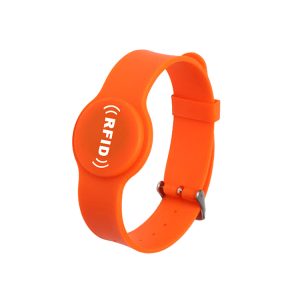Radio Frequency Identification (RFID) technology has undergone significant advancements in recent years, transforming the way businesses manage inventory, track assets, and enhance security. As the demand for real-time visibility and data-driven insights continues to grow, several emerging trends are shaping the future of RFID technology.
1. Internet of Things (IoT) Integration: The integration of RFID with the Internet of Things (IoT) is revolutionizing connectivity and interoperability across diverse applications. By combining RFID tags and readers with IoT platforms, organizations can create intelligent ecosystems that enable seamless communication between physical objects and digital systems. This convergence facilitates enhanced data collection, analysis, and decision-making, unlocking new opportunities for automation, efficiency, and innovation.
2. Hybrid RFID Systems: Hybrid RFID systems, which combine passive and active RFID technologies, are gaining traction for applications requiring both long-range visibility and low-cost scalability. By leveraging passive RFID tags for item-level tracking and active RFID tags for real-time monitoring of assets or personnel, organizations can achieve comprehensive visibility across their operations. This hybrid approach offers the flexibility to adapt to diverse use cases while maximizing the benefits of both passive and active RFID technologies.
3. Enhanced Data Security: With the proliferation of RFID-enabled devices and the increasing volume of data transmitted wirelessly, ensuring data security has become paramount. Advanced encryption algorithms, secure protocols, and tamper-resistant RFID tags are being developed to mitigate cybersecurity threats and safeguard sensitive information. Additionally, the integration of blockchain technology with RFID systems holds promise for enhancing data integrity, traceability, and transparency, particularly in industries such as supply chain management and healthcare.
4. Edge Computing and Real-Time Analytics: The adoption of edge computing technologies is enabling RFID systems to process data closer to the point of capture, reducing latency and bandwidth requirements. By deploying edge computing platforms alongside RFID readers, organizations can perform real-time data analysis, event detection, and decision-making at the network edge. This enhances responsiveness, scalability, and reliability, particularly in dynamic environments where instantaneous insights are crucial.
5. Miniaturization and Flexible Form Factors: Advances in miniaturization technologies are driving the development of smaller, more flexible RFID tags with enhanced performance and durability. These miniaturized tags can be embedded in a wide range of materials, including textiles, plastics, and even liquids, opening up new possibilities for RFID-enabled applications in industries such as fashion, healthcare, and food packaging. Furthermore, flexible form factors enable RFID tags to withstand harsh environments and diverse operating conditions, ensuring reliable performance in challenging settings.
6. Sustainable RFID Solutions: As sustainability becomes a key priority for businesses worldwide, there is a growing focus on developing eco-friendly RFID solutions. This includes the use of recyclable materials, energy-efficient designs, and lifecycle management strategies to minimize environmental impact. Additionally, RFID-enabled sustainability initiatives, such as smart waste management and green supply chain optimization, are helping organizations reduce waste, conserve resources, and achieve their sustainability goals.
7. AI-Driven Insights and Automation: The integration of artificial intelligence (AI) with RFID technology is empowering organizations to extract actionable insights from RFID data and automate decision-making processes. AI algorithms can analyze vast volumes of RFID data to identify patterns, predict trends, and optimize operations in real time. This enables proactive maintenance, predictive inventory management, and personalized customer experiences, driving efficiency and competitiveness across various industries.
In conclusion, the future of RFID technology is characterized by innovation, convergence, and sustainability. By embracing emerging trends such as IoT integration, hybrid systems, enhanced security, edge computing, miniaturization, sustainability, and AI-driven insights, organizations can harness the full potential of RFID technology to achieve digital transformation, operational excellence, and sustainable growth in an increasingly connected world.
![Rfid Tag manufacturer [Wholesale | OEM | ODM]](https://www.fjrfidfactory.com/wp-content/uploads/2024/04/logo.webp)






